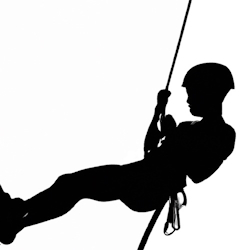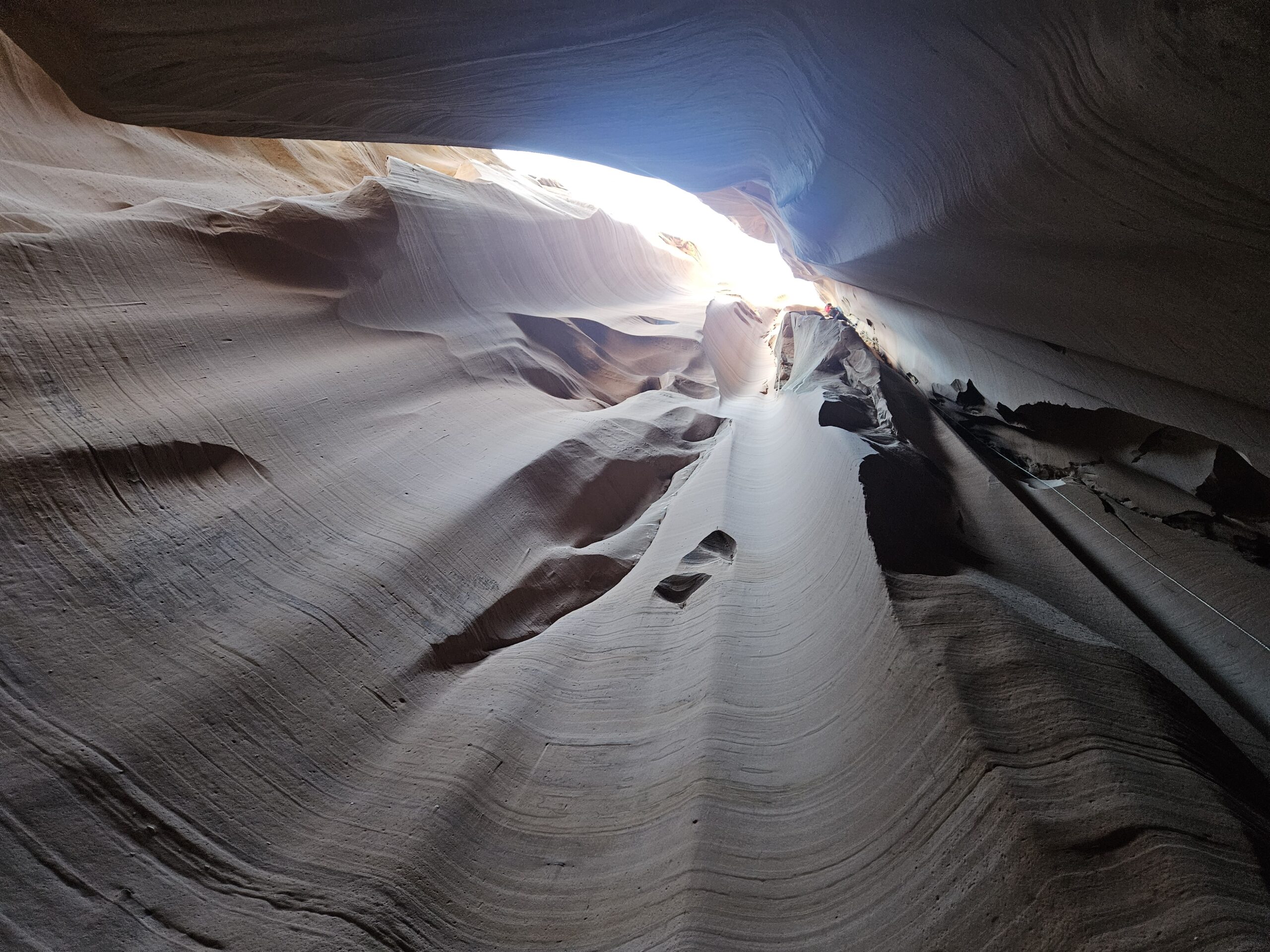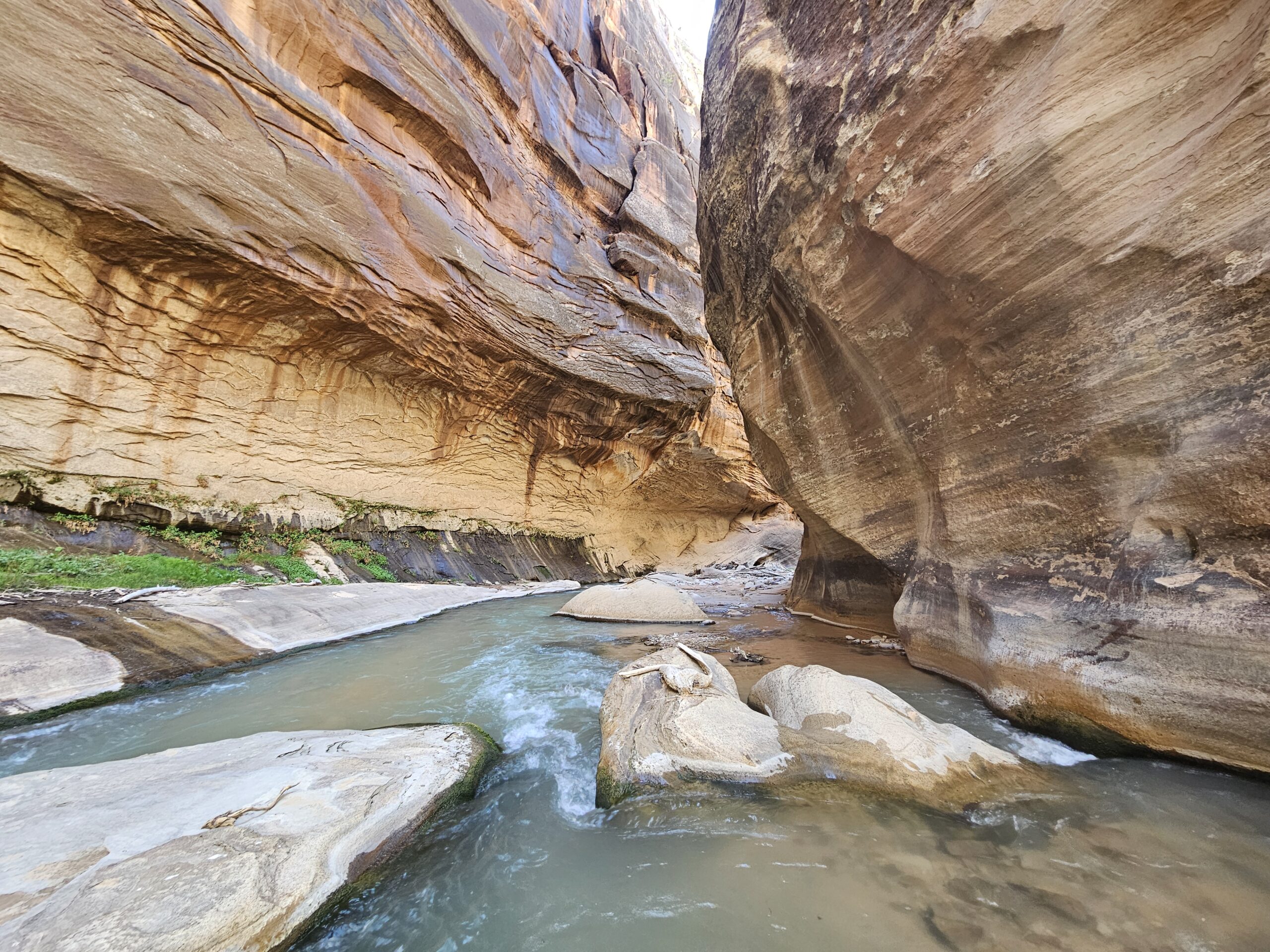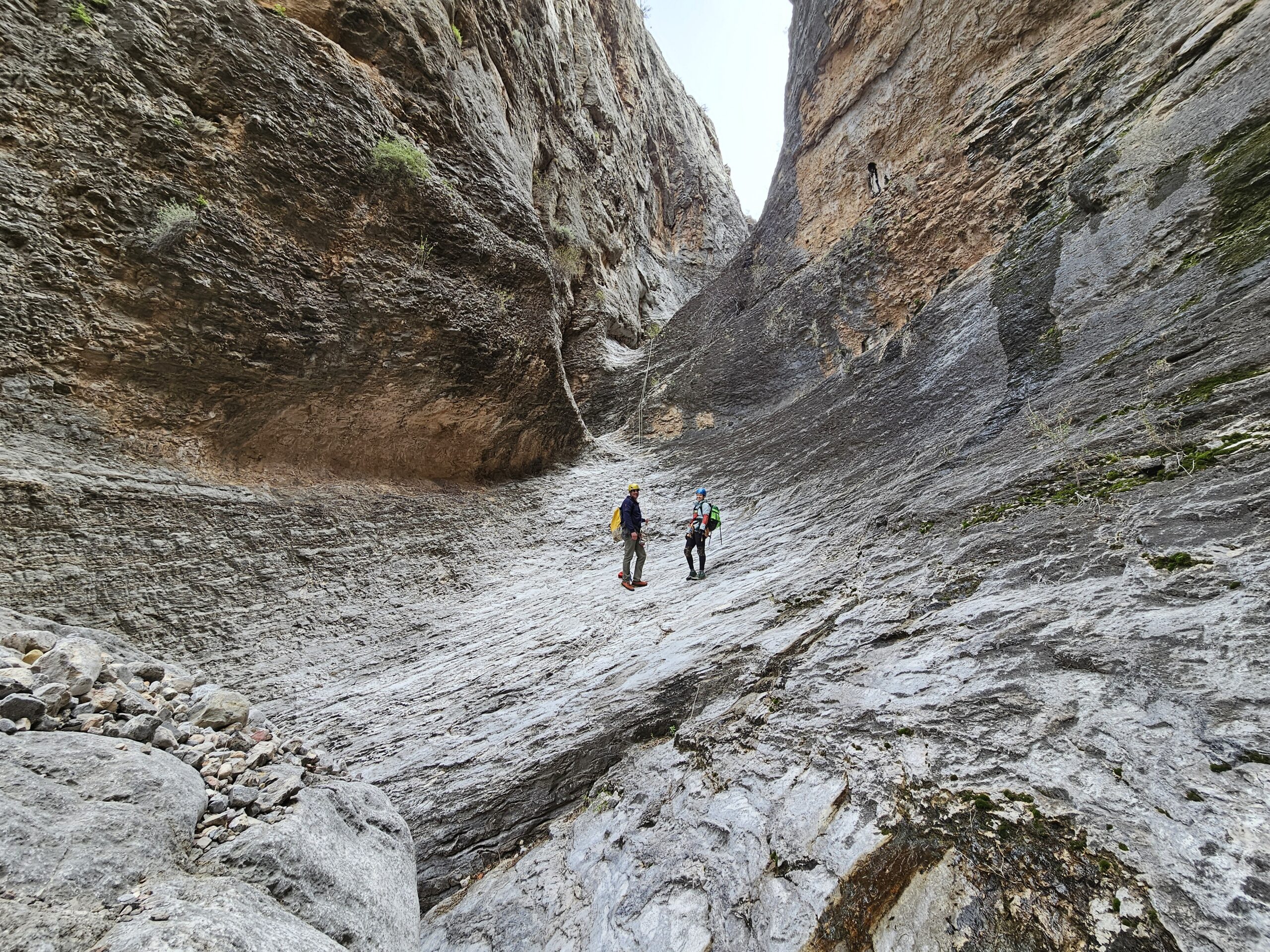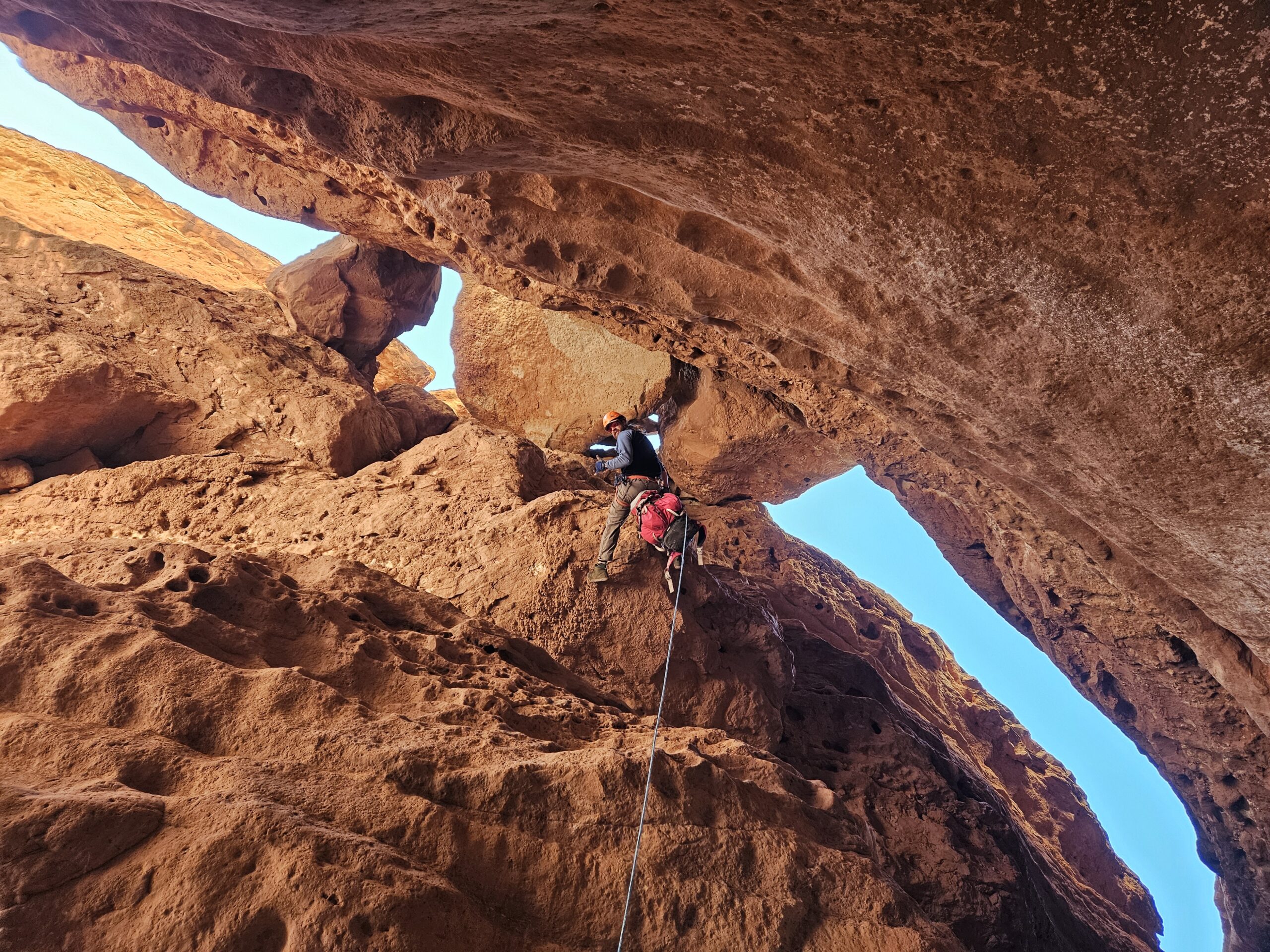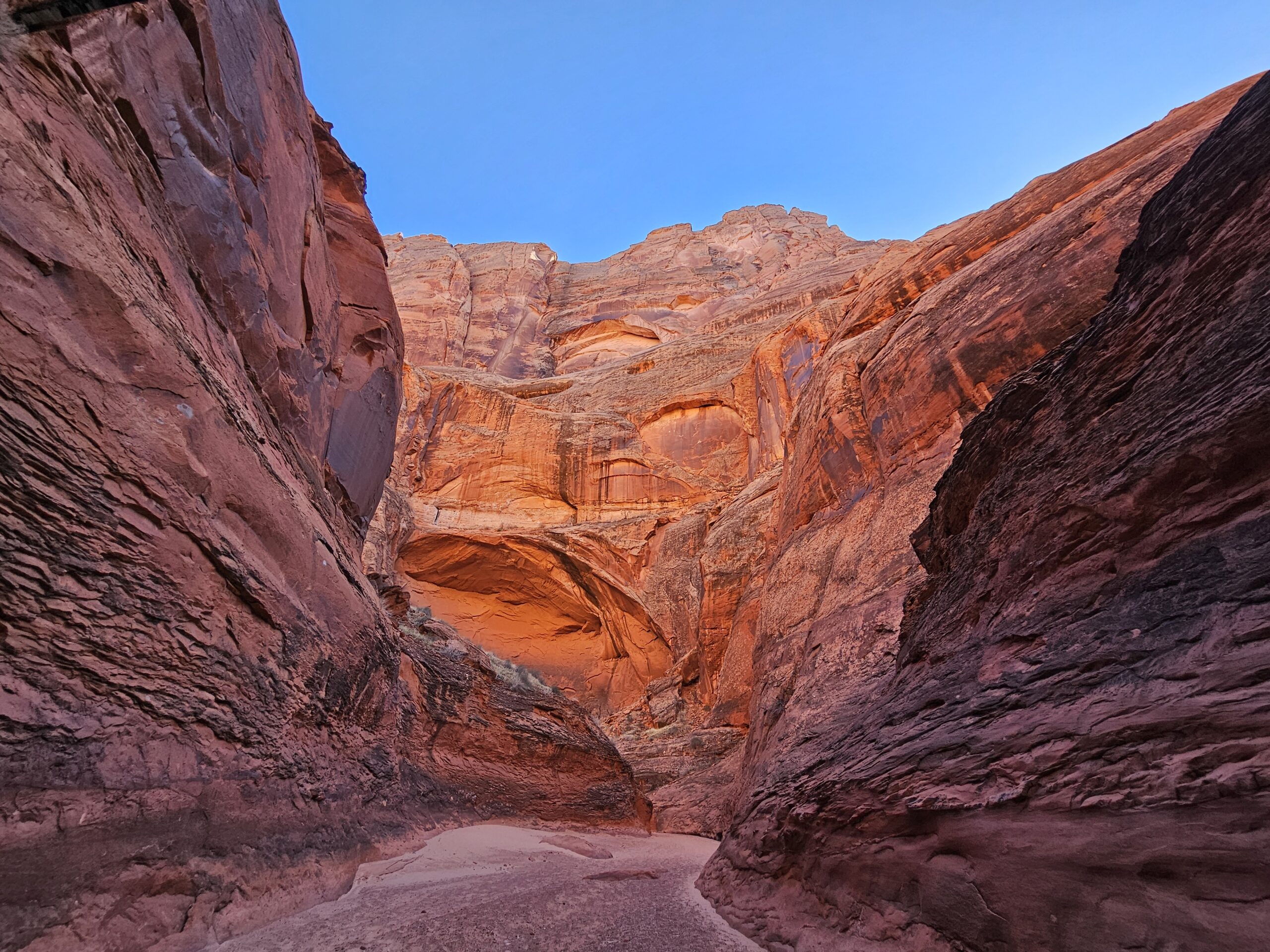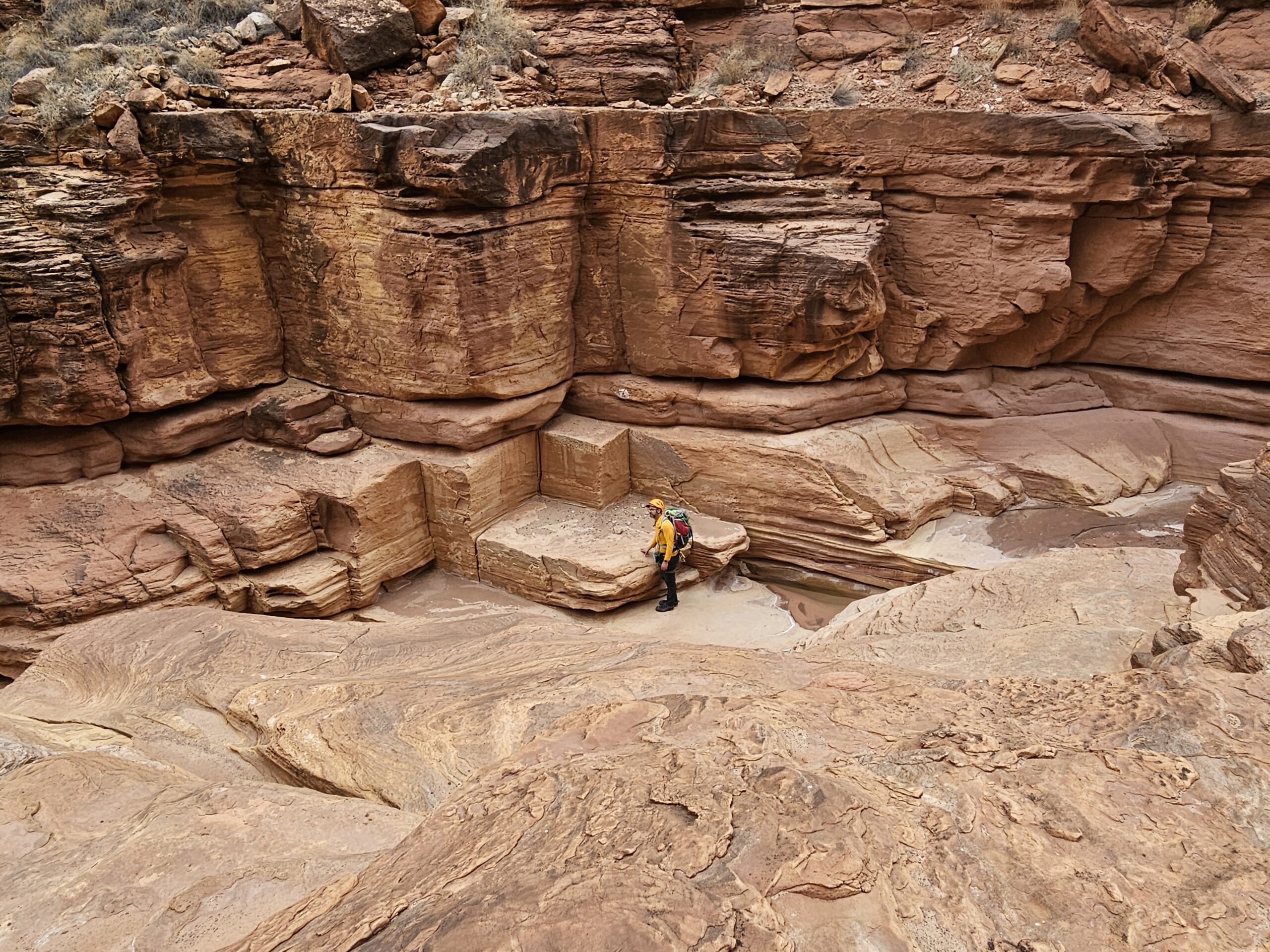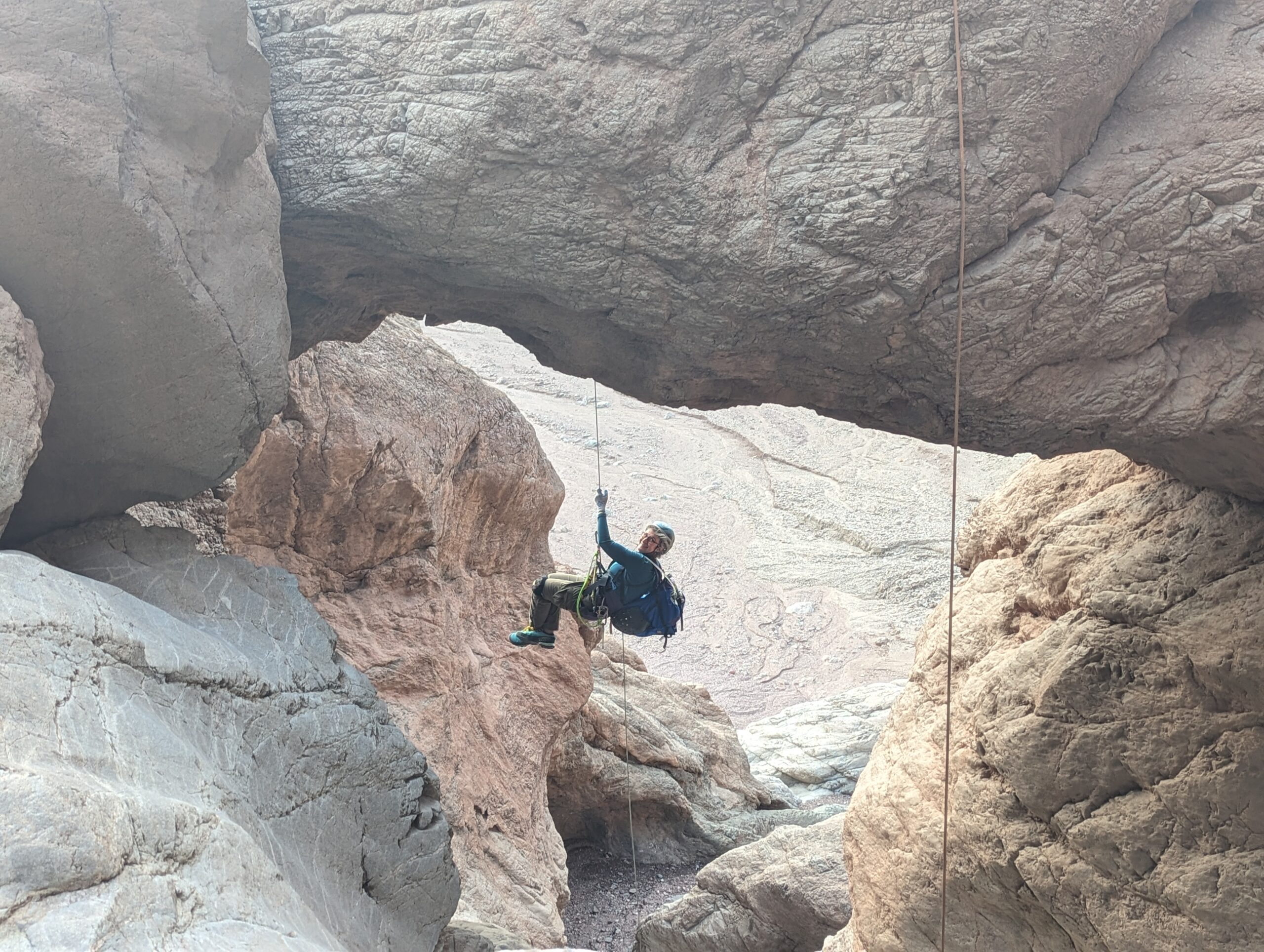Canyoneering is a technical sport that requires skills and equipment to descend dry and wet canyons safely. Some of the required skills include rappelling off bolted and natural anchors, downclimbing obstacles, setting and checking anchors, rope management, partner assist techniques, scrambling and climbing over uneven terrain and exposed areas, swimming and moving through areas of cold water or swift water to name a few. The canyoneering routes described in this section are all technical and can result in injury or death if undertaken by an inexperienced person or group. Even routes designated as “easy” or “beginner” should not be underestimated.
If you have limited canyoneering experience, please do not attempt these routes without an experienced group and leader, and never attempt a technical canyon if you are alone. Formal training is available in many places and is highly recommended if you are interested in learning more about the sport. Canyoneering rendezvous and local clubs are also a great way to get canyoneering experience safely in a group setting.
My intention is to share my love of canyoneering with others, grow awareness of the sport and share the sport with anyone who is interested in learning more in a safe and supportive environment. That being said, while many of my descriptions make these canyons look fun (which they are!), there are still significant risks involved, which are mitigated by a lot of experience and training of myself and my companions.
The canyons described in this blog often require permits and fees or have other red tape associated with them. If a permit is required, this information will be mentioned in the post. I will also link to beta (technical information) about the canyon, which provides information about how to get into and out of the canyon and the number and length of rappels.
If you have any questions, please contact me. Now get out there and have fun!
At the beginning of May, our friend Sri came to visit Utah and proposed a weekend in [...]
Fat Man’s Misery is one of the ultimate hikeaneering adventures in Zion NP. Located just outside the [...]
The Virgin River Gorge, known as the VRG, is a place of transitions and contradictions. It is [...]
It was the last Sunday of March, and we woke up to a blizzard. We were staying [...]
Imagine, if you will, a vast maze composed of red sandstone spires, deep vertical cracks, ramps and [...]
Soap Creek is a thoroughly delightful canyon, located in Marble Canyon, Arizona. This short and engaging canyon [...]
On a cold morning in mid-March we pulled up to a small pullout on Highway 89 in [...]
After five posts in a row about Death Valley, it’s time to move on to something completely [...]
The day after Styx, we thought we would up the ante a bit by making an attempt [...]
In mid-February, our niece Mira came to visit us for her “reading week”. The request was for [...]
